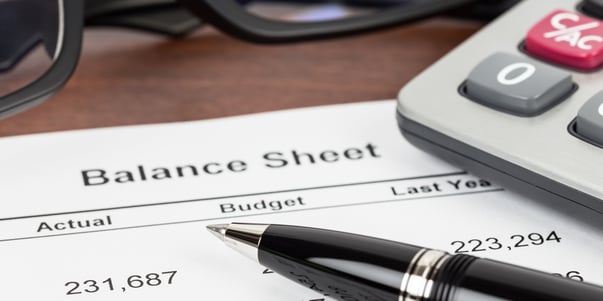
Balance sheets are one of the primary statements used to determine the net worth of a company and get a quick overview of it's financial health. The ability to read and understand a balance sheet is a crucial skill for anyone involved in business, but it's one that many people lack.
When it comes down to it, the balance sheet is just a more detailed version of the fundamental accounting equation:
Assets = Liabilities + Equity
You've probably heard at least some of these terms before but what do they actually mean? Let's break it down:
Assets
The assets are the operational side of the company, basically a list of what the company owns. Everything listed there is an item that the company has control over and can use to run the business.
In a sense, the left side of the balance sheet is the business itself – the buildings, the inventory for sale, the cash from selling goods, etc. If you were to take a clipboard and record everything you found in a company, you would end up with a list that looks remarkably like the left side of the Balance Sheet. The assets are what allow the company to run.
Liabilities
Liabilities and equity make up the right side of the balance sheet and cover the financial side of the company. This is a list of what the company owes. With liabilities, this is obvious – you owe loans to a bank, or repayment of bonds to holders of debt, etc. The interest rates are fixed and the amounts owed are clear. These are also listed on the top because, in case of bankruptcy, these are paid back first before any other funds are given out.
Equity
Below liabilities on the balance sheet, you'll find equity, the amount owed to the owners of the company. Since they own the entire company, this amount is intuitively based on the accounting equation – whatever is left over of the Assets after the liabilities have been accounted for must be owned by the owners, by equity. These are listed on the bottom, because the owners are paid back second, only after all liabilities have been paid.
However, unlike liabilities, equity is not a fixed amount with a fixed interest rate. This means that any time the value of assets change – perhaps you receive more in cash from a sale than the value of the inventory you sold, or you were forced to write-down a truck that was involved in a collision and no longer works – the value of equity changes.
Because the value of liabilities is constant, all changes to assets must be reflected with a change in equity. This is also why all revenue and expense accounts are equity accounts, because they represent changes to the value of assets.
Make sense?
So, to recap, you'll find the assets (what's owned) on the left of the balance sheet, liabilities (what's owed) and equity (the owner's share) on the right, and the two sides remain balanced by adjusting the value of equity. And there you have it!
Want to dive deeper into balance sheets, assets, liabilities, and equity? Check out HBX CORe, the online fundamentals of business program from Harvard Business School!
About the Author
Brian is a member of the HBX Course Delivery Team and is currently working to design a Finance course for the HBX platform. He is a veteran of the United States submarine force and has a background in the insurance industry. He holds an MBA from McGill University in Montreal.










